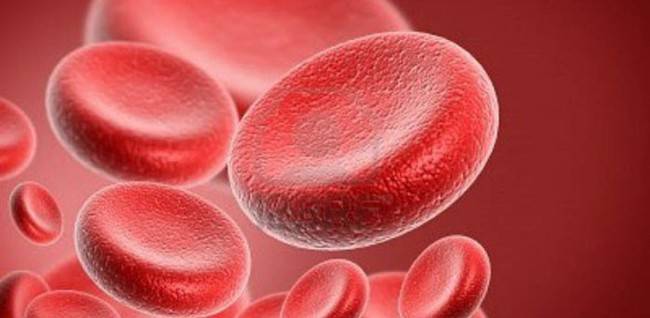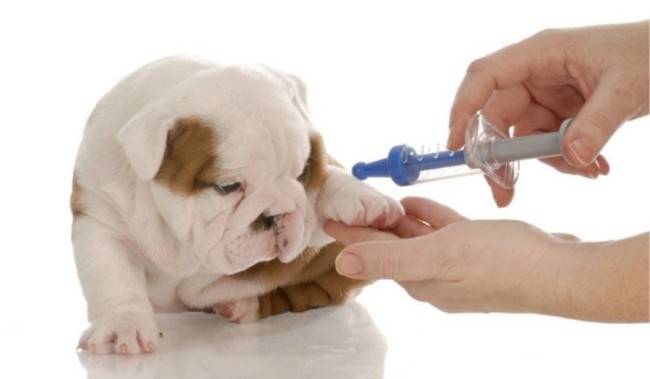Anemia is a disease that develops not only in humans, but and in animals. It occurs due to a decrease in the level of red blood cells – these cells are associated with the oxygen supply of the body. Red blood cell deficiency can adversely affect the condition organs and systems of the dog, significantly worsen its condition. how timely recognize the presence of anemia in the dog, and how this disease?
Content
- 1. Types of Anemia in Dogs
- 2. Factors for the occurrence of anemia in dogs
- 3. Symptoms and signs of anemia in dogs
- 4. Which dogs are at risk
- 5. Diagnosis of the disease in dogs
- 6. Therapeutic treatment of anemia in dogs
- 7. Anemia in dogs on video
- 8. Prognosis for dogs with anemia
Types of Anemia in Dogs
Contents

There are several varieties of this disease:
- Posthemorrhagic anemia. Arises due to blood loss, it doesn’t matter if an internal or external bleeding. It may result from injury, Affected vessels of the circulatory system and internal organs. Of course, a disease is extremely difficult to detect if bleeding is internal, especially when it comes to chronic process. But you can notice the blanching of the mucous membranes, and subcutaneous hemorrhages of a point often appear kind of.
- Hypoplastic anemia. This form of the disease due to the lack of any trace elements, proteins or vitamin components – iron, copper, zinc, selenium, vitamins Group B or folic acid. If the pet receives full, enriched with useful elements, nutrition, perhaps the development of hypoplastic anemia due to damage to bone cells brain toxic substances. Toxins can accumulate in organism due to previous infectious diseases or metabolic disorder.
- Alimentary anemia. Belongs to the category hypoplastic anemia. Develops in puppies from an early age, if they get the wrong, unbalanced diet. Can be associated with less iron with the diet, much less often there is a pathology of impaired absorption from the intestine.
- Aplastic form of pathology. Is developing due to severe violations in the activity of the hematopoietic system. Pathology concerns not only the formation of red blood cells, but also other blood cells. Complicated hypoplastic anemia can flow over time into aplastic.
In addition, veterinarians can diagnose regenerative and non-regenerative forms of anemia in dogs. At the first the type of pathology the body is able to compensate for the loss red blood cells, producing fairly quickly new ones, but what about the second form of quick recovery does not occur.
Dog Anemia Factors

The following conditions can affect the onset of the disease and processes:
- Injuries causing great blood loss.
- Heavy internal bleeding formed in gastrointestinal tract (occur due to severe inflammatory processes or infectious diseases).
- Infectious diseases (most often anemia develops in the background tick-borne infestation), in most cases suffer from dog anemia small sizes.
- Immuno-mediated (autoimmune) diseases causing body systems exterminate their own red blood cells.
- Taking medications, such as non-steroidal anti-inflammatory drugs that often cause bleeding in the gastrointestinal tract.
- Afanipertez – infection with fleas. As with tick-borne infestations, there is an increased danger for representatives of dwarf breeds and puppies.
- Poisoning a dog with poisonous substances, or severe metals, causing severe intoxication of the body.
- Chronic illnesses (often dogs, especially older ones, suffer from renal failure and oncology), with therapy which use medications that reduce the process red blood cell production.
Symptoms of anemia can be different and depend directly on reasons for its development.
Symptoms and signs of anemia in dogs
The main function of red blood cells is to spread across all tissues and organs oxygen, which is extremely important for their activities. Therefore, a decrease in red blood cell count leads to lethargy of the dog, It’s hard for an animal to endure physical activity. Pet more and more is in a supine position, does not show activity, but gets up only out of need.
Your pet’s appetite is reduced, or it may refuse to food. With anemia, pale or blue mucous membranes are observed, if the dog gums feel, then with anemia they are cold.
If the disease does not appear due to bleeding, but against severe intoxication or helminthic or tick-borne infestation, then the data symptoms develop at a slow pace. Most often, dog owners for a long time and do not suspect that their pet is sick.
During autoimmune anemia, more severe symptoms:
- Dyspnea.
- Disruptions of the digestive tract – vomiting, loose stools.
- Polyuria – an increase in the amount of urine (does not manifest itself is always).
- Polydipsia – increased thirst, the pet drinks very large amount of water.
- Fever.
During the examination, detection of tachycardia is possible, systolic murmurs, rapid breathing, jaundice. Urine may have brown due to hemoglobin or bilirubin staining. Ultrasound scan and other research methods reveal an increase in organs – the liver, spleen, as well as lymph nodes.
Which dogs are at risk?

Anemia can develop in absolutely all pedigree dogs, mestizos, adults or puppies. But a special risk group includes dogs with a history of gastric or duodenal ulcer intestines, as well as animals with hereditary pathologies.
This includes pit bull terriers and greyhounds, as these breeds are prone to diseases of infectious origin, and those, in turn, lead to the development of anemia.
Dog Disease Diagnosis
Anemia is detected through a blood test. Often the methodology for determining the hemocrit value is applied; as part of a clinical blood test. If the indicator is lower norms by 35%, then the pet will be diagnosed with “anemia”.
When diagnosing anemia, a number of diagnostic tests aimed at identifying parasites that affect destruction of red blood cells, as well as cells with abnormal a structure that signals the presence of leukemia. Among the methods Diagnostics often use a bone marrow biopsy – analysis gives information about his condition and what caused anemia.
Among other tests for diagnosing anemia, the following:
- blood for biochemistry;
- urinalysis (general);
- feces for gastrointestinal parasites.
A set of measures allows you to find out exactly what has become cause anemia in the dog. Based on the results, assigned timely effective treatment.
Therapeutic treatment of anemia in dogs

Given the above, we can agree that does not exist a single treatment for anemia. Therapy depends on what caused the disease. In addition, when prescribing treatment, the veterinarian evaluates the condition of the pet, takes it into account age and characteristics of the body.
For anemia, the following procedures can be used:
- intravenous infusion aimed at increasing blood volume;
- transfusion of blood components, red blood cell mass is taken, whole blood, platelets, or freshly frozen plasma;
- bone marrow transfusion (transfusion);
- antibiotic therapy (prescribed if detected infection);
- a course of vitamin K1 (phylloquinone or phytomenadione), which normalizes blood coagulation processes;
- the use of anti-parasite agents;
- the appointment of drugs containing useful elements – iron, phosphates, potassium;
- general therapeutic measures aimed at maintaining the body of the animal;
- if necessary, surgical intervention.
In the process of treatment, monitoring of the condition is extremely important pet, and after treatment, regular monitoring.
With adequate treatment, signs of acute aplastic anemia is eliminated after 21-28 days. Chronic course diseases of this type is more complex, requires very serious approach. Even after a course of therapy, the animal is long time cannot fully recover.
Naturally, a young animal is more likely to recover from any varieties of the disease, and the disease is relatively easier. At the young body’s recovery period, including after surgery, takes less time.
Anemia in dogs on video
Prognosis for dogs with anemia
Of course, the prognosis for a pet with anemia depends on the type and form diseases, body conditions and other factors. At dogs of hemolytic anemia of any age, even older ones, recover quite quickly. Naturally, if there was timely diagnosis and treatment.
If anemia is caused by intoxication with toxic substances or autoimmune diseases, the prognosis is less favorable.
Cancer-related anemia, in most cases, ends with the death of the animal, as the dog’s body is bad responds to chemotherapy or surgery.
Anemia is a serious illness, therefore it is important to help in time pet!






